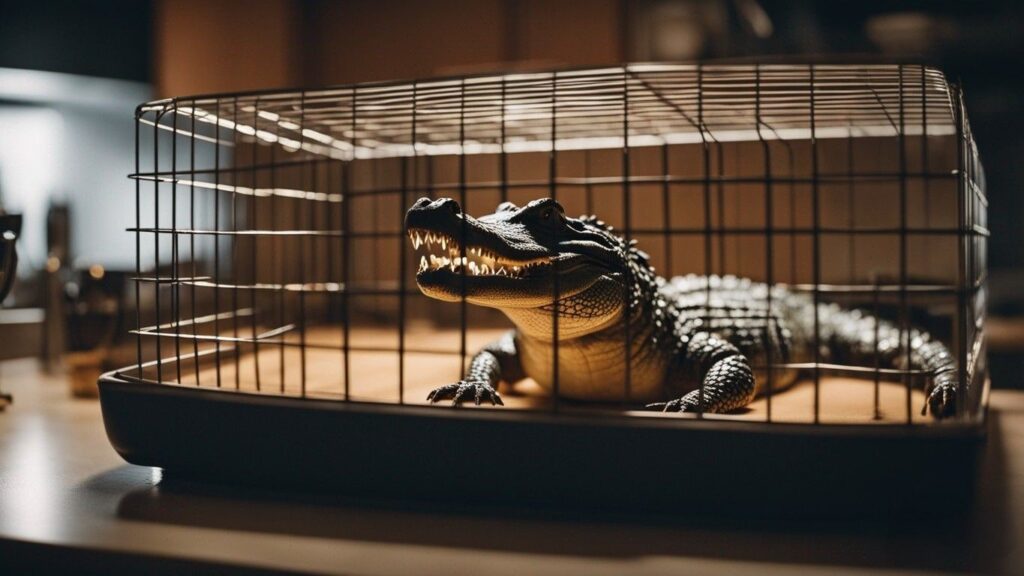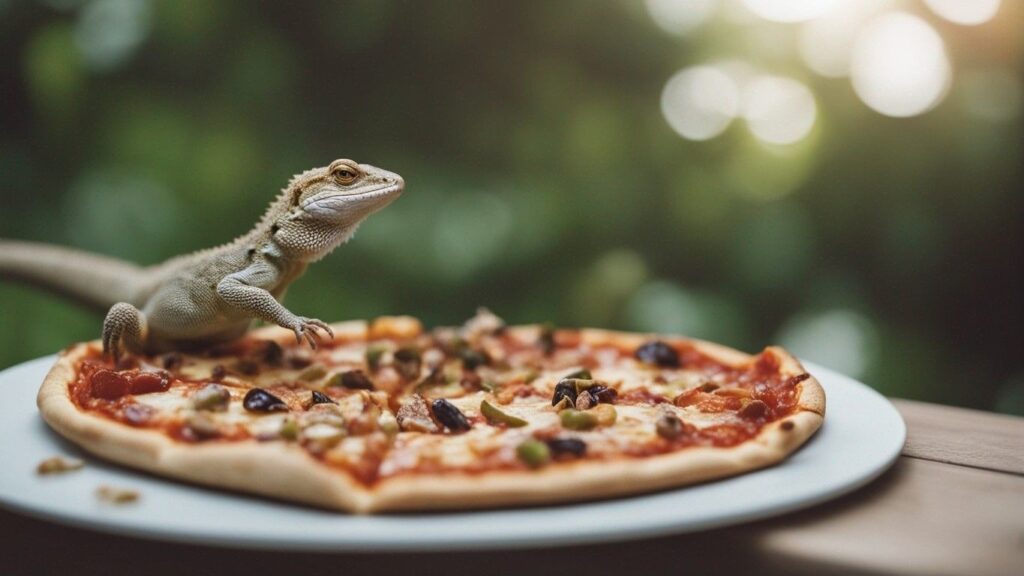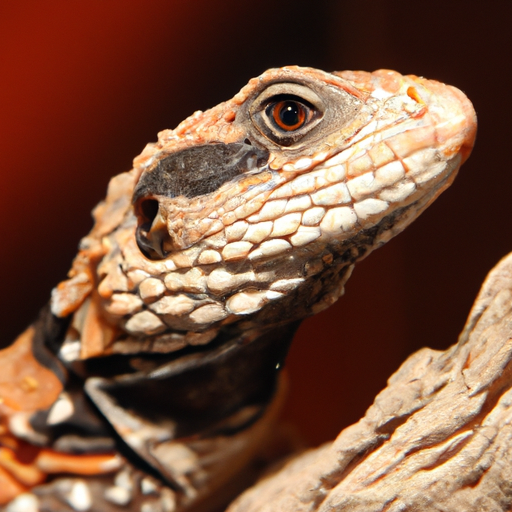So, you’ve been thinking about getting a pet lizard, but you’re not quite sure which type would be the best fit for you.
Well, fret not, because in this article, we’ll explore the world of lizards as pets and discuss some of the top contenders in the reptile kingdom.
From the playful Leopard Gecko to the majestic Bearded Dragon, we’ll uncover what makes these fascinating creatures perfect companions for any aspiring lizard owner.
So, if you’re ready to embark on a scaly adventure, let’s find out what lizards make good pets.

Housing and Habitat Requirements
Cage Size
When it comes to housing and habitat requirements for lizards, cage size is of utmost importance. Lizards need ample space to move around, climb, and exercise.
The size of the cage will depend on the species of lizard you have. Smaller lizards, such as leopard geckos or crested geckos, can be housed comfortably in a 20-gallon tank.
However, larger lizards like bearded dragons or blue tongue skinks will require a minimum of a 40-gallon tank.
It’s essential to provide a cage that is spacious enough to accommodate the lizard’s needs and allow for natural behaviors.
Temperature and Lighting
Proper temperature and lighting are vital for the well-being of your pet lizard. Different lizard species have specific temperature requirements, so it’s crucial to research the needs of your particular lizard.
Most lizards require a temperature gradient within the enclosure, with a warm side and a cooler side.
This allows the lizard to regulate its body temperature and thermoregulate effectively. Using proper heating and lighting equipment, such as heat lamps and UVB bulbs, is essential to provide the necessary warmth and UV radiation for your lizard’s health.
Substrate Options
Choosing the right substrate for your lizard’s enclosure is essential for maintaining a healthy and comfortable living environment.
Some popular substrate options include reptile carpet, paper towels, newspaper, and coconut fiber bedding.
The choice of substrate will depend on the species of lizard you have and its specific requirements.
For example, leopard geckos thrive on non-loose substrates like reptile carpet, while bearded dragons prefer loose substrates like reptile sand or soil mixtures.
It’s crucial to select a substrate that is safe and easy to clean, as well as suitable for your lizard’s natural habitat.
Hiding Places
All lizards require hiding places within their enclosure to feel secure and exhibit natural behaviors.
Providing various hiding spots with caves or sturdy branches allows lizards to retreat and feel safe when needed.
These hiding places should be strategically placed throughout the enclosure to create a sense of security for your pet lizard.
Additionally, offering different levels of elevation, such as rocks or branches, allows the lizard to climb and bask, mimicking their natural habitat.
Providing ample hiding places and climbing opportunities are crucial for the overall well-being and enrichment of your lizard.
Feeding and Nutrition
Dietary Needs
A vital aspect of owning a pet lizard is understanding their specific dietary needs. Different lizard species have different feeding requirements. It’s essential to research and provide a balanced diet that mimics their natural feeding habits. Most lizards are insectivores, meaning they primarily eat insects. However, some species, like bearded dragons, have broader dietary needs, including a mix of insects, fruits, vegetables, and even small vertebrates. Ensure you are providing a healthy and varied diet that meets your lizard’s nutritional requirements to promote their overall health and well-being.
Feeder Insects
For most lizard species, insects form a significant part of their diet. It’s crucial to provide a variety of feeder insects to ensure a well-rounded and nutritious diet. Common feeder insects include crickets, mealworms, waxworms, and roaches. Each type of insect offers different nutritional benefits, so offering a mix of feeder insects helps provide a more diverse nutrient profile for your lizard. It’s important to ensure any feeder insects are properly gut-loaded before feeding them to your lizard, meaning they have been fed a nutritious diet themselves to pass on these nutrients to your pet.
Supplements
Supplements play a vital role in the health and vitality of pet lizards. Calcium and vitamin D3 are two essential supplements that are commonly needed by lizards. Calcium is crucial for proper bone growth and prevention of metabolic bone disease, while vitamin D3 aids in calcium absorption. Dusting feeder insects or adding supplements to your lizard’s food helps ensure they receive the necessary vitamins and minerals they may not be getting solely from their diet. It’s important to follow dosage guidelines and consult with a reptile veterinarian to ensure you are providing the appropriate supplements for your specific lizard species.https://www.youtube.com/embed/-orVxhTWlKg
Temperament and Handling
Docile and Tame Lizards
Some lizard species are known for their docile nature and tolerance for handling. These lizards are generally more suitable for beginners or those who prefer a pet that can be easily handled. Leopard geckos, for example, are known for their calm and gentle nature, making them an ideal choice for those seeking a docile lizard. Crested geckos are also generally amicable and can tolerate gentle handling. These lizards are great options for those who want to interact with their pet and enjoy holding and observing them.
Semi-Aggressive Lizards
On the other hand, some lizard species are more semi-aggressive and less tolerant of handling. These lizards may skittish or prone to biting, making them less suitable for beginners or those who prefer minimal interaction. Veiled chameleons, for instance, can exhibit aggressive behaviors if they feel threatened or stressed. Ackie monitors are also known for their active and sometimes assertive nature. These lizards require experienced handlers who understand their behavior and can provide the appropriate care without risking injury to either the lizard or the handler.
Handling Techniques
Proper handling techniques are crucial to ensure both the safety of the handler and the well-being of the lizard. When handling a lizard, it’s important to approach them slowly and gently, allowing them time to acclimate to your presence. Using a gentle and supportive grip, such as loosely cupping them in your hands or allowing them to crawl onto your arm, helps reduce stress and potential injury. It’s important to be patient and not force handling if the lizard shows signs of distress. Regular and gentle handling can help build trust and familiarity between you and your pet lizard.
Lizards Suitable for Beginners
Leopard Gecko
Leopard geckos are widely regarded as one of the best lizard species for beginners. They have a calm temperament, are relatively low-maintenance, and have straightforward care requirements. Leopard geckos are native to the arid regions of Pakistan and are adapted to thrive in drier conditions. They are nocturnal and have distinctive features such as their spotted markings and thick tails. These geckos are generally easy to handle, making them an excellent choice for those new to lizard keeping.
Crested Gecko
Crested geckos, also known as eyelash geckos, are another excellent lizard species for beginners. They are known for their unique, crested head and their ability to climb using specialized toe pads. Crested geckos are nocturnal and are native to New Caledonia. They have relatively simple care requirements and are less demanding compared to many other lizard species. These geckos are popular due to their docile nature, ease of handling, and their striking appearance, with various color and pattern variations.
Bearded Dragon
Bearded dragons are arguably one of the most popular lizard species for beginners. They have a friendly and outgoing temperament, are relatively easy to care for, and are highly adaptable. Bearded dragons are native to Australia and are known for their unique defensive display of puffing out their throat, resembling a beard. They are diurnal lizards, requiring both heat and UVB lighting. Bearded dragons are generally tolerant of handling and can form strong bonds with their owners, making them a top choice for novice lizard enthusiasts.

Lizards for Experienced Keepers
Veiled Chameleon
Veiled chameleons, also known as Yemen chameleons, are a visually striking species that requires experience and knowledge to keep successfully. These lizards originate from Saudi Arabia and Yemen, where they inhabit a diverse range of habitats. Veiled chameleons have specific requirements in terms of humidity, temperature, and lighting to replicate their natural environment. They are known for their ability to change color, their distinct crests and casques, and their exceptional ability to target prey with their long, sticky tongue. Due to their complex care needs and potential for aggressive behavior, veiled chameleons are recommended for experienced lizard keepers.
Blue Tongue Skink
Blue tongue skinks are a fascinating lizard species that requires an experienced keeper due to their complex care requirements. These skinks are native to Australia and are characterized by their large, blue-colored tongue, from which they get their name. Blue tongue skinks are diurnal, active during the day, and are known for their docile and curious nature. They require a large enclosure, proper heating and lighting, and a diverse diet consisting of both insects and vegetables. While blue tongue skinks can be rewarding pets, their unique needs make them better suited for those with previous reptile-keeping experience.
Ackie Monitor
The Ackie monitor, also known as the spiny-tailed monitor, is an intelligent and active lizard species that requires advanced reptile-keeping skills. Native to Australia, these monitors have a distinctive spiny tail and are well-suited for larger enclosures with ample climbing and basking opportunities. Ackie monitors are diurnal and require a specialized diet consisting of insects and small vertebrates. While they can develop strong bonds with their handlers, Ackie monitors can be fast and agile, requiring experienced keepers to provide the necessary care and handling.
Lifestyle and Activity Level
Nocturnal vs. Diurnal Lizards
Lizards can be categorized as either nocturnal or diurnal, depending on their natural activity patterns. Nocturnal lizards, like leopard geckos and crested geckos, are primarily active during the night, while diurnal lizards, like bearded dragons and blue tongue skinks, are most active during the day. Understanding the activity patterns of your lizard is essential for providing the appropriate lighting, heating, and handling routines. Nocturnal lizards may have different requirements for hiding places and temperature gradients compared to diurnal lizards and may have different interaction and feeding schedules.
Sedentary vs. Active Lizards
Lizards also vary in their activity levels, with some being more sedentary while others are highly active. Sedentary lizards, like leopard geckos, tend to spend a significant amount of time hiding or basking, with less frequent and shorter bursts of movement. On the other hand, active lizards, like blue tongue skinks or bearded dragons, are generally more energetic and require larger enclosures with ample space for exercise and exploration. Understanding the activity level of your lizard is crucial for providing an appropriate-sized enclosure and enrichment opportunities that cater to their specific needs.

Space and Enclosure Requirements
Indoor vs. Outdoor Housing
When it comes to housing pet lizards, both indoor and outdoor options are possible, depending on the species and your climate. Indoor housing offers more control over temperature, lighting, and other aspects of the environment, making it suitable for lizards with specific requirements. Outdoor enclosures can provide more space for larger species and allow lizards to experience natural sunlight, which can have positive effects on their overall health. However, it’s important to ensure that outdoor enclosures are secure from predators and provide suitable shelter and temperature regulation for the lizard’s well-being.
Terrarium Size
The size of the terrarium or enclosure required for your lizard will depend on its species, activity level, and growth potential. It’s essential to provide a spacious terrarium that allows the lizard to move comfortably and exhibit natural behaviors. A good general guideline is to ensure that the enclosure is at least one and a half times the length of the lizard, and the width should be at least half the length of the lizard. Offering vertical space for climbing, horizontal space for movement, and enough room for hiding spots and enrichment is crucial for the overall well-being of your pet lizard.
Customizing the Enclosure
Customizing your lizard’s enclosure is an opportunity to create a habitat that mimics their natural environment and provides enrichment. Adding live or artificial plants, sturdy branches or rocks for climbing, and various hiding places allows the lizard to explore and feel secure in its enclosure. It’s important to research your lizard’s natural habitat and replicate its specific needs within the enclosure. Creating a visually appealing and stimulating environment not only benefits the lizard’s physical and mental well-being but also provides an opportunity for you to enjoy and observe their natural behaviors.
Availability and Cost
Common and Affordable Lizards
Some lizard species are more readily available and affordable compared to others. Leopard geckos and crested geckos, for example, are commonly found in pet stores and reptile expos, making them more accessible to potential owners. These lizards also tend to have lower price points for both the initial purchase and ongoing care. Bearded dragons, while slightly larger and more expensive than geckos, are still relatively affordable and widely available. It’s important to consider both the initial cost and ongoing expenses when selecting a lizard species that fits your budget.
Rare and Expensive Lizards
On the other end of the spectrum, some lizard species are considered rare or have higher price tags due to factors such as limited availability, specialized care requirements, or unique appearances. Veiled chameleons, with their elaborate casques and remarkable color-changing abilities, can be more challenging to find and come at a higher price. Blue tongue skinks, particularly certain subspecies or color variations, can also be more expensive due to their popularity and limited supply. Ackie monitors, known for their intelligence and active nature, can be pricier given their unique care needs. It’s important to consider the potential long-term costs of caring for a rare or expensive lizard species.
Lizards for Families with Children
Child-Friendly Lizards
When choosing a lizard as a family pet, it’s important to consider the temperament and handling capabilities of the lizard. Leopard geckos, with their calm and gentle nature, are generally suitable for families with children of various ages. They are easy to handle and interact with, making them a popular choice. Crested geckos, although not as commonly handled as leopard geckos, are generally tolerant of gentle handling and can be a good fit for families with older children. It’s important to supervise and teach children proper handling techniques to ensure the safety and well-being of both the lizard and the child.
Age-Appropriate Lizards
For families with younger children, it may be more suitable to choose lizard species that require minimal handling or have specific care needs. Anoles, for example, are small, diurnal lizards that are commonly found in pet stores. While they are not typically handled frequently, they can provide an opportunity for children to observe and learn about basic lizard care. Other lizards like leopard geckos or bearded dragons can also be suitable for families with children, with proper supervision and involvement from adults. It’s important to select a lizard species that aligns with the child’s age, maturity level, and ability to understand and follow care instructions.
Longevity and Lifespan
Short-Lived Lizards
Lizard species can vary significantly in terms of their lifespan, with some being relatively short-lived. Anoles, for example, have a lifespan of about 2-5 years, making them ideal for those who prefer a pet with a shorter commitment. These small lizards may be suitable for individuals who want to experience lizard ownership without the long-term responsibility. However, it’s important to note that proper care and husbandry are still crucial to ensure the short life of an anole is a healthy and fulfilling one.
Long-Lived Lizards
On the other hand, some lizard species have relatively long lifespans, requiring a more significant commitment from the owner. Bearded dragons, with proper care, can live up to 10-15 years or even longer. Tortoises, which are also considered under the umbrella of lizards, can have lifespans that exceed several decades. It’s essential to consider the long-term commitment and potential changes in lifestyle when selecting a long-lived lizard species as your pet. Proper care and adequate planning for their well-being throughout their lifespan are crucial to ensure a rewarding and fulfilling experience for both you and your lizard.
Final Thoughts
In conclusion, there are various lizard species that make excellent pets, each with its own unique requirements, temperaments, and care needs.
Whether you are a beginner or an experienced reptile keeper, there is a lizard suitable for you. From docile and easy-to-handle species like leopard geckos and crested geckos to more exotic and challenging species like veiled chameleons and blue tongue skinks, there is a lizard out there that can bring joy and fascination to your life.
Understanding the housing, nutrition, handling, and longevity aspects of each species is crucial to providing the best care for your chosen lizard companion.




